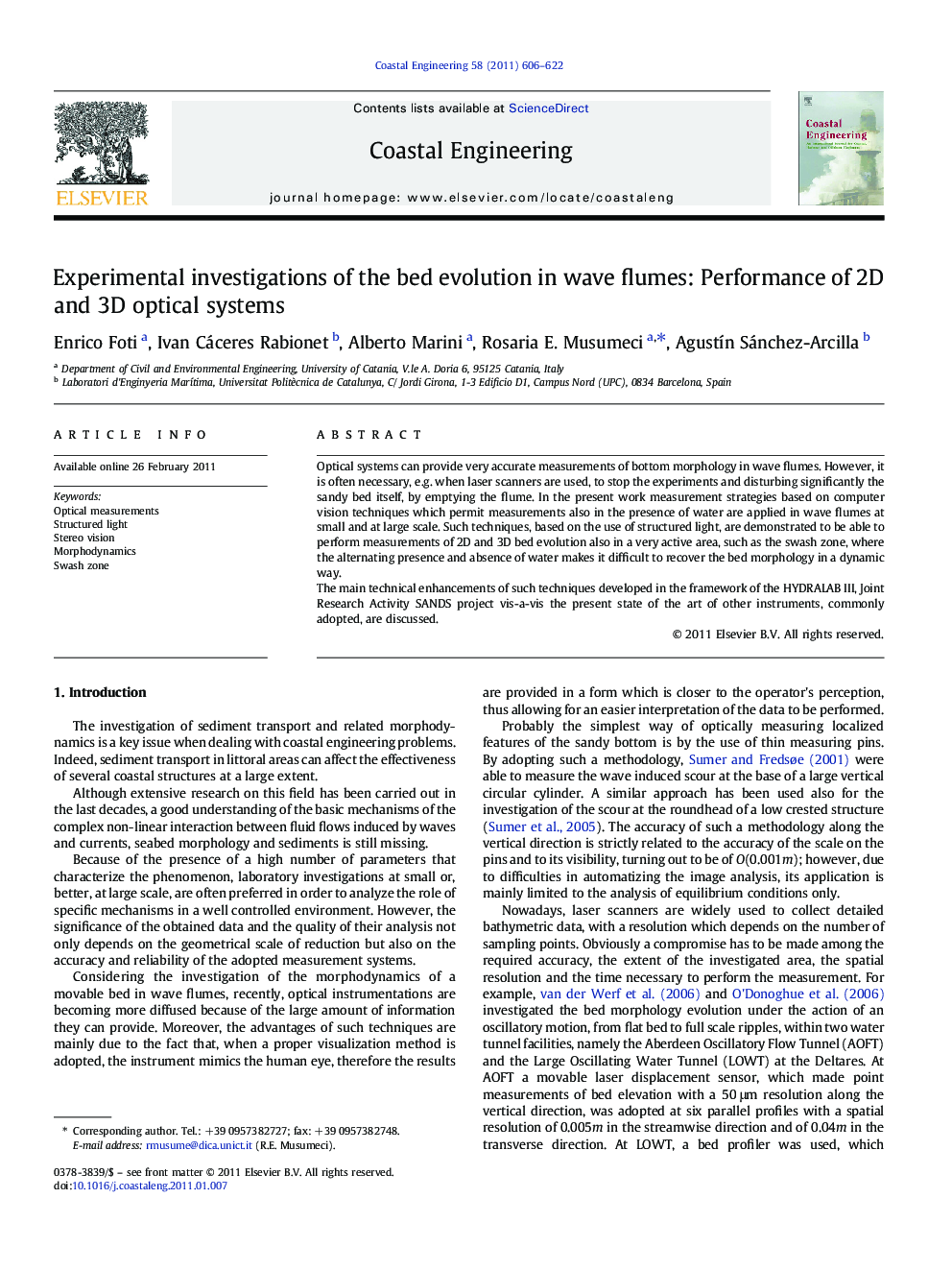| Article ID | Journal | Published Year | Pages | File Type |
|---|---|---|---|---|
| 1721126 | Coastal Engineering | 2011 | 17 Pages |
Optical systems can provide very accurate measurements of bottom morphology in wave flumes. However, it is often necessary, e.g. when laser scanners are used, to stop the experiments and disturbing significantly the sandy bed itself, by emptying the flume. In the present work measurement strategies based on computer vision techniques which permit measurements also in the presence of water are applied in wave flumes at small and at large scale. Such techniques, based on the use of structured light, are demonstrated to be able to perform measurements of 2D and 3D bed evolution also in a very active area, such as the swash zone, where the alternating presence and absence of water makes it difficult to recover the bed morphology in a dynamic way.The main technical enhancements of such techniques developed in the framework of the HYDRALAB III, Joint Research Activity SANDS project vis-a-vis the present state of the art of other instruments, commonly adopted, are discussed.
